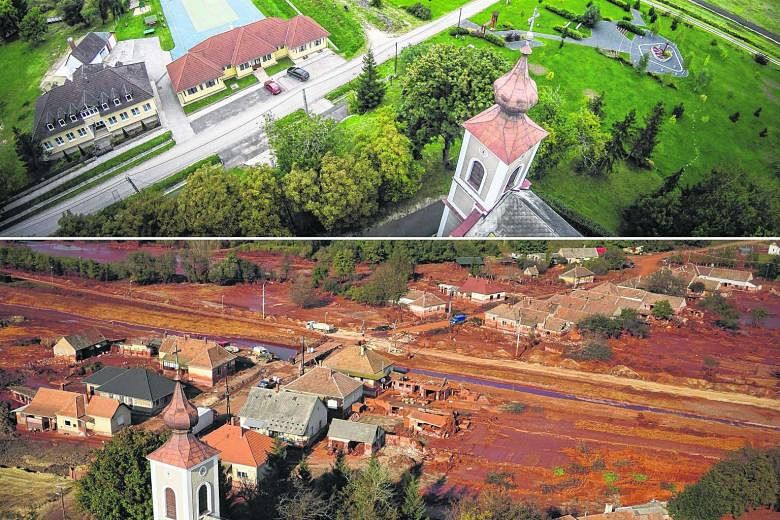A general view of Kolontar village in Hungary on Wednesday (top) and on Oct 12 five years ago, eight days after the country's red sludge catastrophe.
On Oct 4, 2010, the dike of a reservoir containing red mud at an alumina factory near Kolontar broke, and almost 1 million cubic m of the poisonous chemical sludge, a by-product of the factory, inundated three villages - Kolontar, Devecser and Somlovasarhely - killing 10 people and seriously injuring more than 120 others.
Named for its colour, red sludge is toxic if ingested. Experts also say that it is slightly radioactive, highly corrosive and contains toxic heavy metals such as lead, cadmium, arsenic and chromium.

